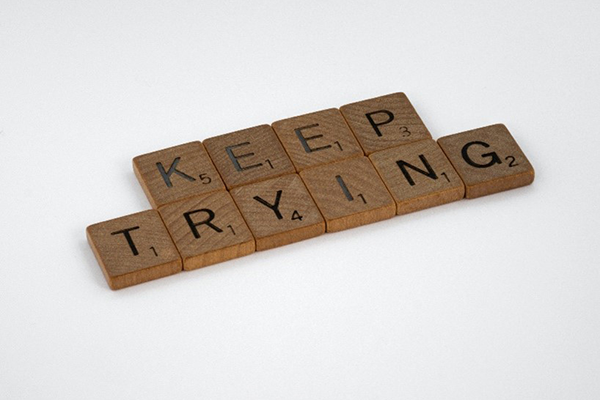If you’ve decided to make some changes this year, but you have yet to start or your resolution is fizzling out after a couple weeks of going strong, you are not alone. Even when we have the best intentions, stubborn old habits, day-to-day responsibilities and unexpected life events can sometimes get in the way of our progress. Now is the perfect time to reflect on your values, personality and preferences, and build a plan with customized strategies to help you stick with healthier habits for the long haul.
Use these tricks and tools to make healthier habits stick. #newyear #saslife Click To TweetStep 1: Reflect
- Identify your why. Ask yourself why you want to make a change in the first place. Here are a few examples of some whys.
- To keep energy levels and mood stable
- To make daily activities like climbing stairs and keeping up with young kids easier
- To be healthy long into the future to be there for family and friends
- To feel more comfortable in your body
- List out your strengths and assets (e.g., time of day when you have the most energy, gadgets you own that could help, supportive people in your life, 10 minute openings in your day that could be used to chop some veggies or take a movement break).
- Be aware of potential barriers (e.g., Wednesday evenings are too busy to cook a meal from scratch, my partner keeps cookies in the house), so you can troubleshoot ahead of time and are not thrown off guard by them later.
- Check out the quizzes below if you’d like help identifying how expectations affect you and the best times of day for you to get things done. (Note: You may have to provide your email address to get the results.)
Step 2: Plan
Use some of the strategies below to help you create your personal formula for success.
Find replacement behaviors for what you want to stop doing. For example, if snacking in front of the TV after dinner is your downfall, sip on some herbal tea or go for a walk instead.
Buddy up. Ask a friend or family member to either join you in the pursuit of health or just to check in on you to help hold you accountable.
Stack habits. Habit stacking involves using a habit that is already part of your routine as a cue to add on a small new behavior that you want to become a habit. Here are a few examples of how this can work.
![]() Every time you clean up from dinner, put leftovers in individual containers for lunch, and prep your overnight oats for tomorrow’s breakfast.
Every time you clean up from dinner, put leftovers in individual containers for lunch, and prep your overnight oats for tomorrow’s breakfast.
![]() When you wash your hands, take 3 slow deep breaths.
When you wash your hands, take 3 slow deep breaths.
![]() If you microwave your lunch every day, do squats, lunges and pushups off the counter while you wait.
If you microwave your lunch every day, do squats, lunges and pushups off the counter while you wait.
![]() After putting the kids to bed each night, make a cup of soothing herbal tea to help you unwind.
After putting the kids to bed each night, make a cup of soothing herbal tea to help you unwind.
Schedule it. Blocking time on your calendar and setting reminders can help you to prioritize your health each day. Treat the blocked time as an important meeting. Don’t click dismiss until you have actually done what you intended. Below are some ideas.
![]() Schedule meal planning, shopping and food prep.
Schedule meal planning, shopping and food prep.
![]() Block a few minutes on your calendar to take some mindful breaths at the beginning of each work day, before lunch and/or at the end of your workday.
Block a few minutes on your calendar to take some mindful breaths at the beginning of each work day, before lunch and/or at the end of your workday.
![]() Put movement breaks on your calendar (with a link to a video, details about the fitness class you’ll be attending or location of where you’ll work out).
Put movement breaks on your calendar (with a link to a video, details about the fitness class you’ll be attending or location of where you’ll work out).
![]() Set a reminder on your phone to disconnect and begin your bedtime routine.
Set a reminder on your phone to disconnect and begin your bedtime routine.
Track your progress. Taking notes about day-to-day successes and challenges in a journal or using wearable technology or apps to record specifics can motivate you to keep going and make it obvious when you get off track so you can course correct. See below for ideas.
![]() Keep a mindful eating log, take pics with MealLogger, or go all in and use an app like MyFitnessPal for even more feedback.
Keep a mindful eating log, take pics with MealLogger, or go all in and use an app like MyFitnessPal for even more feedback.
![]() Utilize apps like Calm, Insight Timer or Headspace to guide you through breathing and body scanning exercises. They log your progress and let you track your mood.
Utilize apps like Calm, Insight Timer or Headspace to guide you through breathing and body scanning exercises. They log your progress and let you track your mood.
![]() Wear a smart watch to monitor steps and mileage and to alert you to when you have gone too long without moving. Or get similar nudges from apps like Stand Up! and Randomly RemindMe.
Wear a smart watch to monitor steps and mileage and to alert you to when you have gone too long without moving. Or get similar nudges from apps like Stand Up! and Randomly RemindMe.
![]() Use your phone or an app such as Better Sleep, Sleep Cycle or Sleep Time to keep tabs on your sleep each night.
Use your phone or an app such as Better Sleep, Sleep Cycle or Sleep Time to keep tabs on your sleep each night.
Have a back-up plan ready. Think ahead of time about what you’ll do when life throws a wrench in your plans.
![]() Cooking a meal from scratch isn’t in the cards? Memorize a quick recipe and keep frozen and shelf-stable options handy, so you can throw together a quick meal to avoid pizza delivery.
Cooking a meal from scratch isn’t in the cards? Memorize a quick recipe and keep frozen and shelf-stable options handy, so you can throw together a quick meal to avoid pizza delivery.
![]() No time for 15 minutes of meditation? How about a 3 minute guided relaxation from an app or YouTube?
No time for 15 minutes of meditation? How about a 3 minute guided relaxation from an app or YouTube?
![]() Can’t make it to the gym today? Try a 10 minute video instead.
Can’t make it to the gym today? Try a 10 minute video instead.
![]() Does your partner’s snoring tend to keep you awake? Plan to go to bed early and play some white noise so you can be snoozing before the snore fest begins.
Does your partner’s snoring tend to keep you awake? Plan to go to bed early and play some white noise so you can be snoozing before the snore fest begins.
Step 3: Act
Once you have some ideas together, get to it! Your plan can grow and change as you go, but you know what they say about objects at rest and those in motion, so do something…anything to work toward your goals today! Get started with what you can, and over time you may find that you build on those changes along the way. To help you stay motivated after the novelty of starting something new begins to wear off, keep your why at the forefront of your mind throughout the process. You might even create a visual (e.g., photo, collage) and/or audio reminder to keep you going.
Choose to focus on progress, and be aware of the small, incremental wins that may not seem like huge wins at all in the moment. Focus on what did get done, and give yourself a pat on the back, even for the little things. No matter how small the step is, it can have a profound impact over time!
Step 4: Regroup and Reset as Needed
Setbacks are a part of life. Recognize when you get off track, go back to step 1 and decide if you should make some modifications to make your plan easier to stick with. As the Japanese proverb goes, “Fall down seven times. Stand up eight."
Look here for more healthy habits inspiration from years past.
Creamy Cashew and Butternut Squash Soup
Makes 6-8 servings
Recipe adapted from Goop
PRINT RECIPE
Ingredients
1 medium-size butternut squash, halved and seeded
avocado oil
1 cup raw cashews
2 cups boiling water
1 onion, roughly chopped
2 cloves garlic, smashed
2 tsp fresh thyme leaves
2-4 cups vegetable or chicken stock
salt
pepper
apple cider vinegar, to taste
Directions
- Preheat oven to 400°F. Season the squash halves with salt and pepper, drizzle with avocado oil and place them flesh side down on a parchment paper lined baking sheet. Bake until browned and tender, about 35-40 minutes.
- While that cooks, cover the raw cashews with the boiling water and let sit for at least 30 minutes.
- In a large pot, heat 1 tablespoon of avocado oil over medium heat. Add the onion, garlic, thyme and a pinch of salt. Let that cook for about 10 minutes until softened and fragrant.
- When the squash is cooked, let it cool slightly, then scrape out the flesh and add it to the saucepan. Cook for a minute or two just to let the flavors meld.
- Add the cashews and their soaking liquid to a powerful blender, and blend until smooth.
- Add the cooked squash and sautéed onion mixture and blend again.
- Slowly pour in the 2 cups of stock and blend until smooth. Add more stock until desired consistency is reached.
- Return the mixture to the pot, bring to a boil, and simmer gently for 5 minutes. Taste and add salt, pepper and a splash or two of apple cider vinegar if desired.
- Serve as a side or appetizer, or to make it a complete meal, add leafy greens and cooked chicken, and continue simmering for another 5 minutes.
Notes
As an alternative to using a blender, you can use a handheld immersion blender to puree soup directly in the pot. This soup freezes and reheats well.








